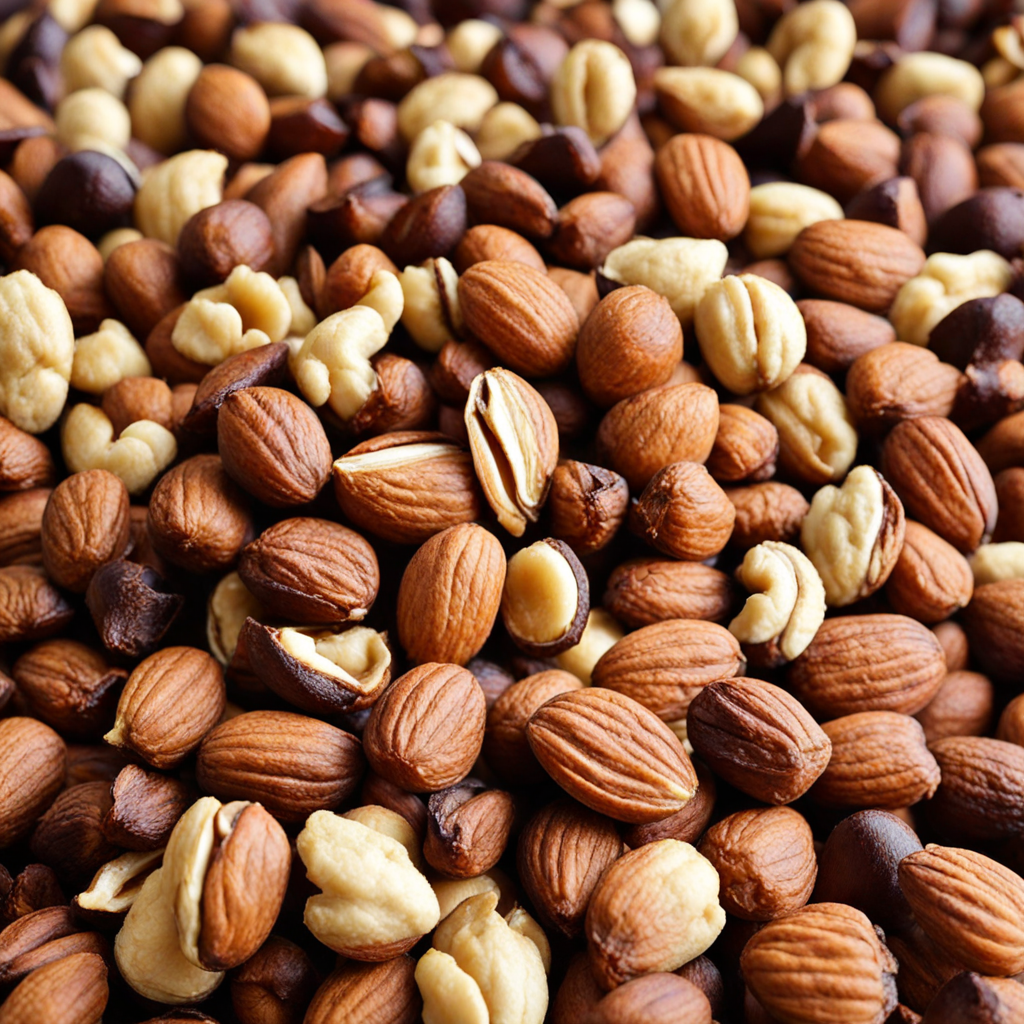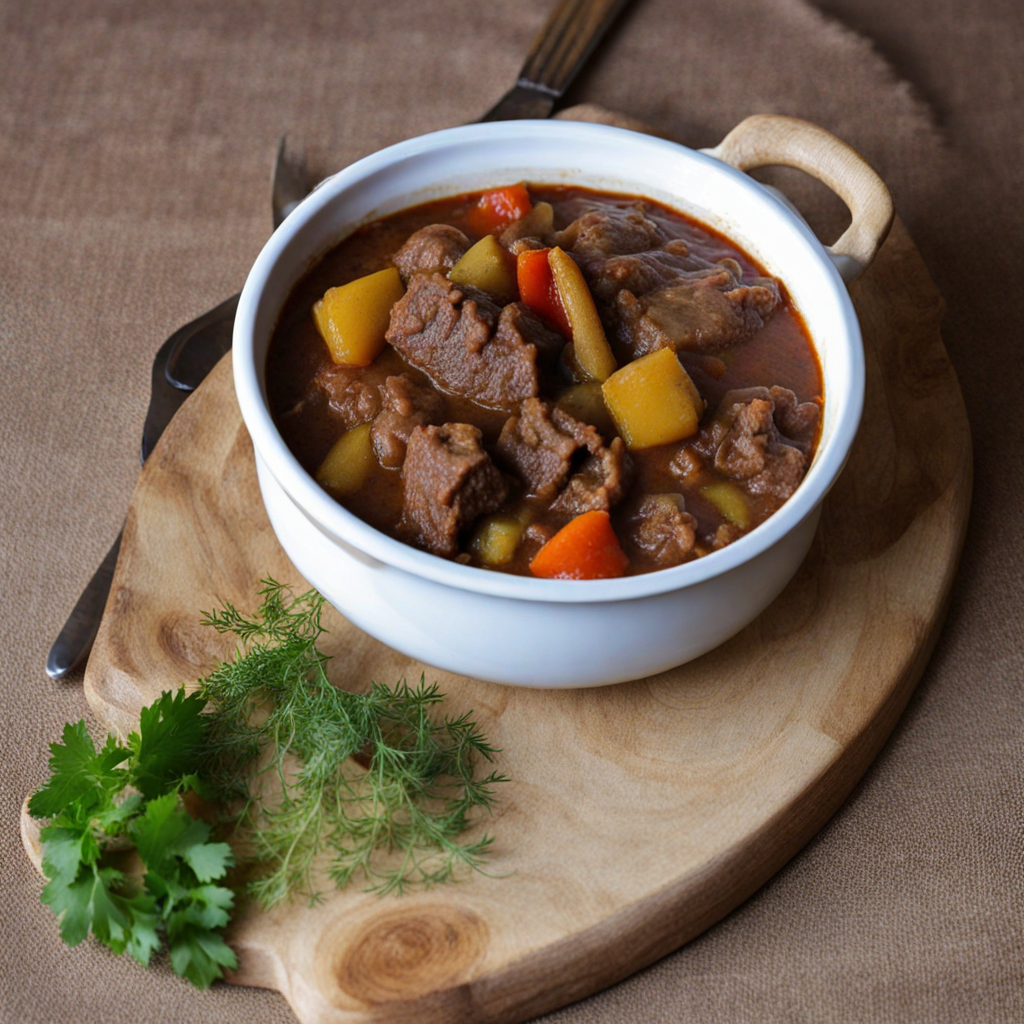Roasted Nuts
Roasted nuts from Eswatini offer a delightful culinary experience that highlights the country's rich agricultural heritage. Often made from locally sourced nuts such as cashews, macadamias, and peanuts, these snacks are roasted to perfection, enhancing their natural flavors and creating a satisfying crunch. The roasting process brings out the rich, nutty aroma that wafts through the air, inviting anyone nearby to indulge in this savory treat. Each bite is a perfect balance of texture and taste, with a warm, toasted exterior that contrasts beautifully with the creamy interior of the nuts. In Eswatini, roasted nuts are typically seasoned with a variety of spices, adding an extra layer of flavor that makes them truly unique. Common seasonings include a sprinkle of salt, a dash of chili powder for a hint of heat, or a sweet glaze made from honey or sugar that caramelizes during roasting. This versatility allows for a range of flavors, catering to both savory and sweet palates. Whether enjoyed as a snack on their own or incorporated into dishes like salads and stir-fries, roasted nuts are a beloved staple that showcases the local ingredients and culinary creativity. The cultural significance of roasted nuts in Eswatini cannot be overlooked, as they often play a role in social gatherings and celebrations. They are commonly shared among friends and family, symbolizing hospitality and togetherness. Additionally, roasting nuts is often a communal activity, where families come together to prepare large batches. This not only strengthens bonds but also allows for the sharing of traditional recipes and techniques passed down through generations. As you explore the taste of roasted nuts, you're not just savoring a delicious snack; you're also experiencing a slice of Eswatini's vibrant culture and community spirit.
How It Became This Dish
Emaganu: The Heart of Eswatini's Culinary Heritage #### Origins Emaganu, also known as "umganu" or "emaganu," is a traditional dish from Eswatini (formerly known as Swaziland), a small landlocked kingdom in Southern Africa. Its primary ingredient is the maize meal, which forms the basis of many staple foods across the African continent. The dish is made by cooking maize meal into a thick porridge or dough-like consistency, often served with a variety of accompaniments, such as stews, vegetables, or sauces. The origins of Emaganu can be traced back to the indigenous cultures of Southern Africa, where maize was introduced to the region in the 16th century. Before maize became a staple, local communities relied on traditional grains like sorghum and millet. However, the adaptation of maize into local diets was not merely a matter of availability; it also reflected the agricultural practices and culinary ingenuity of the Swazi people. Maize quickly became integrated into the socio-cultural fabric of Eswatini. It was not just a food source; it was a symbol of sustenance and community. The cultivation of maize, particularly in the fertile highland regions, became central to the Swazi agrarian lifestyle, influencing social structures, rituals, and communal gatherings. #### Cultural Significance Emaganu is more than just a dish; it represents a connection to the land, heritage, and identity of the Swazi people. In Eswatini, food plays a pivotal role in social interactions, celebrations, and rituals. Emaganu often features prominently in traditional ceremonies, such as weddings, initiation rites, and communal gatherings. During these events, the preparation and sharing of food foster a sense of unity and belonging. The act of cooking Emaganu is typically a communal endeavor, where family members gather to prepare and enjoy the meal together. This practice strengthens familial bonds and reinforces cultural traditions. In the Swazi culture, food is imbued with spiritual significance, with certain dishes believed to carry blessings or protection. Emaganu, being a staple, is often associated with nourishment and prosperity. Moreover, the dish is versatile, allowing for variations depending on regional ingredients and personal preferences. While the basic recipe remains the same, Eswatini’s diverse communities infuse their unique flavors and ingredients into Emaganu, showcasing the country's rich cultural tapestry. For instance, it may be served with a spicy vegetable relish known as "sishwala" or a meat stew, emphasizing the communal aspect of sharing meals. #### Development Over Time The evolution of Emaganu over the years reflects broader changes in Eswatini's social, economic, and cultural landscape. In the pre-colonial era, the dish was primarily a peasant food, consumed by rural communities. However, as Eswatini underwent significant political and economic transformations in the 20th century, so too did its culinary landscape. With the advent of colonialism and the introduction of cash crops, the agricultural practices in Eswatini shifted. The focus on cash crops often marginalized traditional foods, but Emaganu remained a staple due to its adaptability and resilience. During the colonial period, the availability of imported goods and modern cooking methods began to influence traditional practices. While maize meal remained a constant, the introduction of processed foods created a new dynamic in the way Emaganu was prepared and enjoyed. In the late 20th century, as Eswatini gained independence in 1968, there was a renewed interest in traditional culture, including cuisine. This resurgence was fueled by a growing sense of national identity and pride. Culinary practices like Emaganu were revitalized, emphasizing their importance in preserving cultural heritage. The dish became emblematic of the Swazi resistance to cultural dilution, symbolizing a return to roots in the face of globalization. In contemporary Eswatini, Emaganu continues to be celebrated, both in rural and urban settings. The globalization of food culture has encouraged a fusion of traditional and modern culinary practices, with chefs and home cooks alike experimenting with new flavors and presentations. While Emaganu retains its traditional essence, it is increasingly enjoyed in various contexts, including restaurants, food festivals, and cultural events. #### Modern Interpretations Today, Emaganu is not just a relic of the past; it is a vibrant part of Eswatini's culinary scene. Chefs are reimagining traditional recipes, incorporating local ingredients and contemporary cooking techniques. The dish is often served in modern restaurants alongside international cuisines, showcasing its versatility and appeal to a broader audience. Moreover, the rise of culinary tourism has placed Emaganu in the spotlight. As travelers seek authentic experiences, local food has become a focal point of cultural exploration. Visitors to Eswatini are often introduced to Emaganu through food tours, cooking classes, and cultural exchanges, fostering a deeper understanding of the country's heritage. Social media has also played a role in the resurgence of interest in traditional dishes like Emaganu. Platforms like Instagram and Facebook allow home cooks and professional chefs to share their interpretations of the dish, creating a sense of community around food that transcends borders. This digital visibility has contributed to a renewed appreciation for traditional Swazi cuisine, inspiring younger generations to embrace and preserve their culinary heritage. #### Conclusion Emaganu is more than a simple dish; it is a symbol of resilience, community, and cultural identity in Eswatini. Its origins, deeply rooted in the agricultural practices of the Swazi people, reflect the broader historical and social changes that have shaped the nation. As Emaganu continues to evolve, it remains a testament to the enduring power of food as a connector of people, cultures, and stories. In celebrating Emaganu, we not only honor the rich culinary traditions of Eswatini but also recognize the importance of preserving cultural heritage in a rapidly changing world. This dish, with its humble beginnings, has transcended time and continues to nourish both body and spirit, embodying the essence of Eswatini's vibrant culture.
You may like
Discover local flavors from Eswatini







